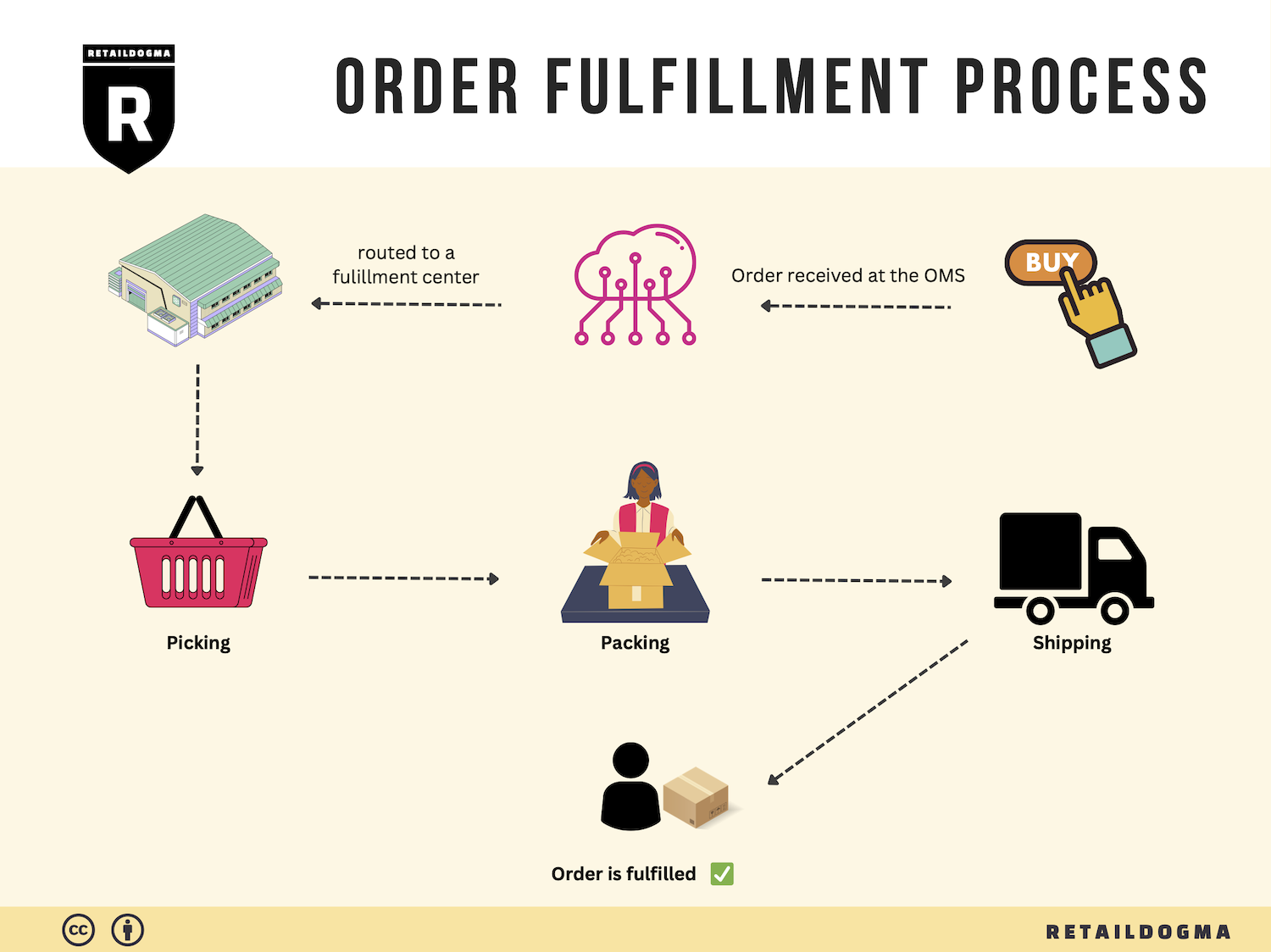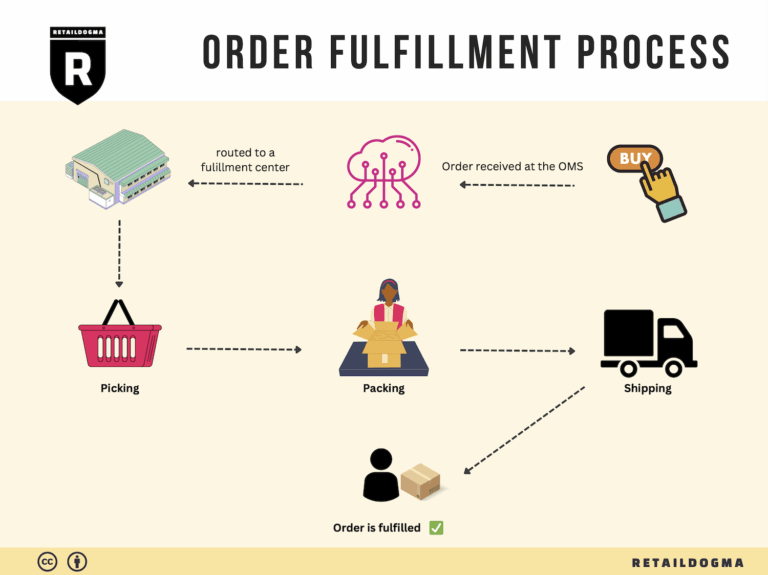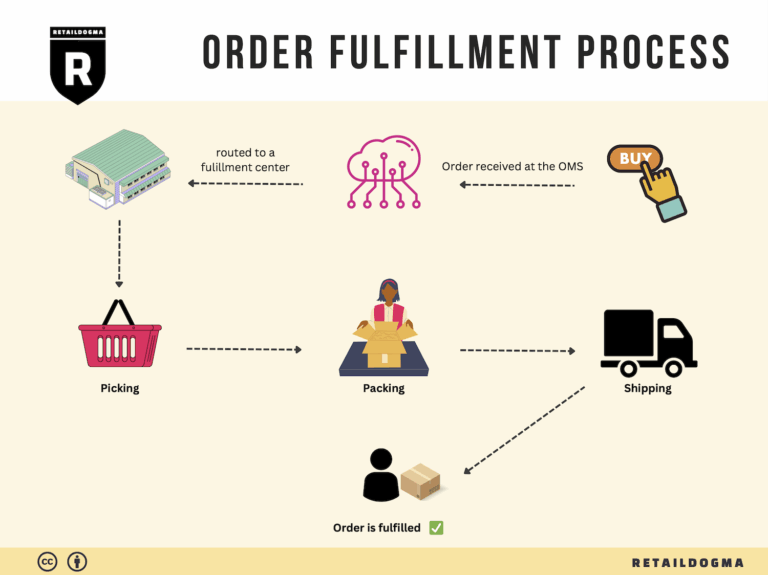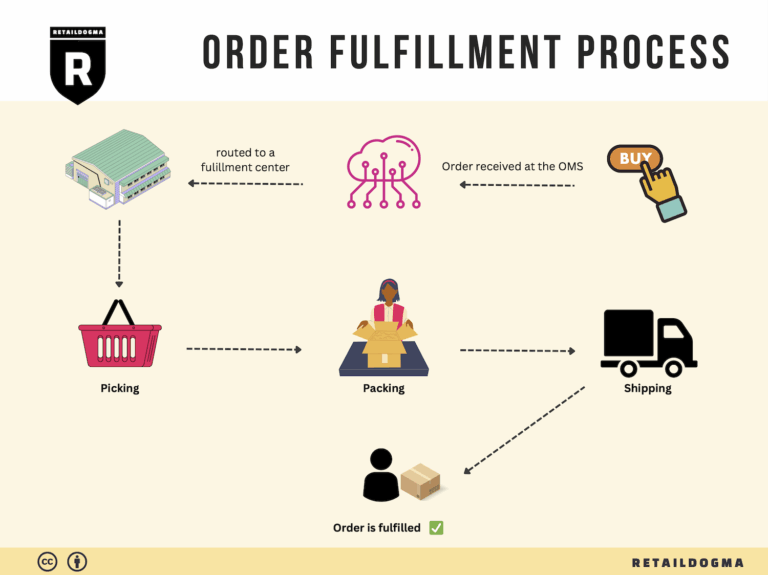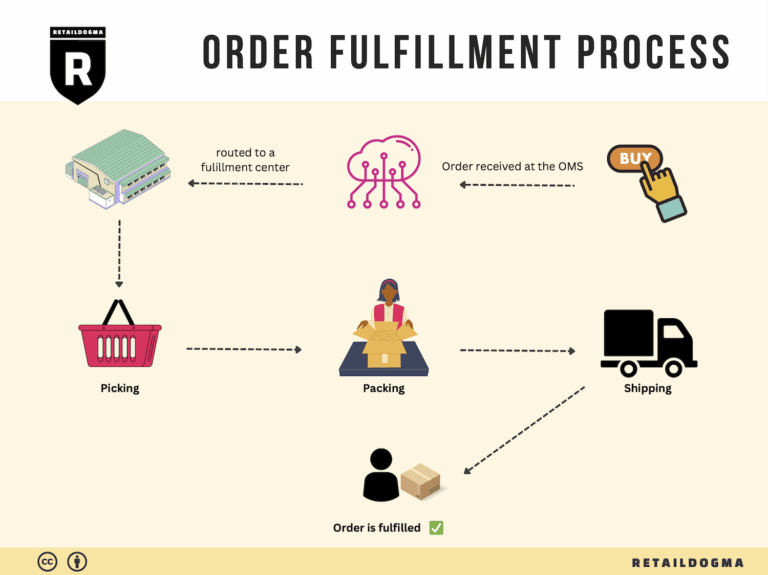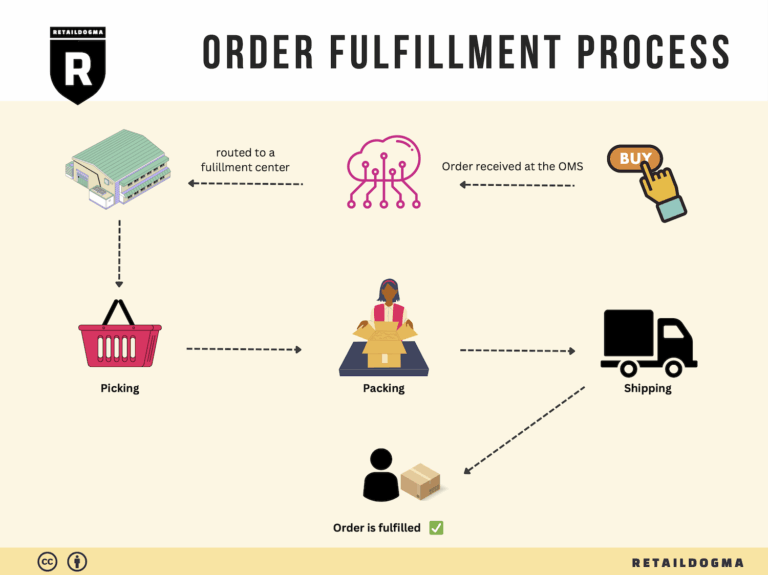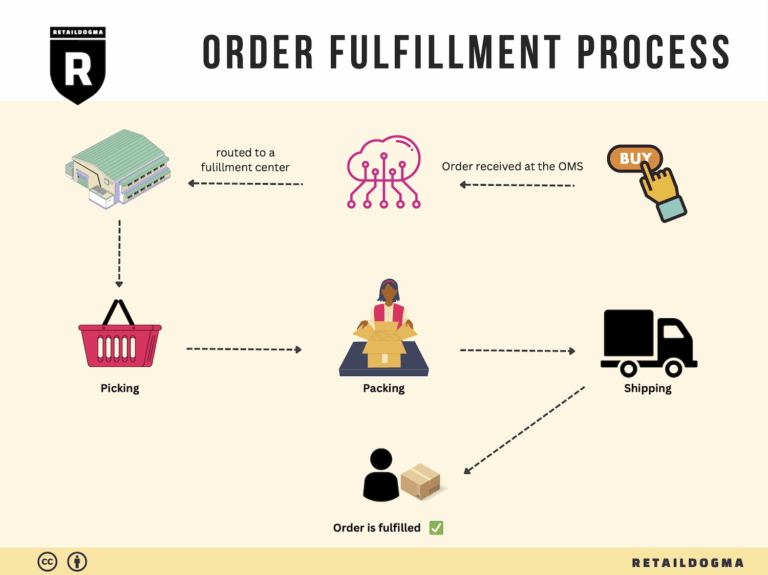Ecommerce Fulfillment Services: The Ultimate Guide (2025)
What is E-commerce Fulfillment? An Introduction for Growing Businesses
Understanding E-commerce Fulfillment: A Vital Component for Growth
As your e-commerce business starts to gain traction, the excitement of increased sales can quickly be overshadowed by the daunting task of fulfilling orders. Packing and shipping can become overwhelming, leading to potential delays, errors, and unsatisfied customers. This is a common pain point for many online businesses, especially those that are scaling. Efficient fulfillment is crucial; it’s the process of getting a product from your warehouse to your customer’s doorstep.
In this guide, we will demystify e-commerce fulfillment and provide actionable insights tailored for growing businesses. We’ll explore various fulfillment models, including Third-Party Logistics (3PL) and Fulfillment by Amazon (FBA), helping you understand the pros and cons of each. Knowing which model suits your business needs can significantly impact your operational efficiency and customer satisfaction.
Additionally, we will delve into the core services that fulfillment providers typically offer. From inventory management to order processing and shipping, understanding these services will enable you to assess potential partners effectively. We’ll also discuss critical factors to consider when choosing a fulfillment partner, such as reliability, technology integration, and customer support.
Pricing is another essential aspect we will cover. It’s important to understand the cost structures associated with different fulfillment options, including any hidden fees. By being informed about pricing, you can make more strategic decisions that align with your budget and growth objectives.
Ultimately, this guide aims to empower you to make smart, informed decisions about your logistics. By optimizing your fulfillment process, you can focus on what you do best: growing your business and delighting your customers. The right fulfillment strategy not only enhances your operational efficiency but also fosters customer loyalty, setting the stage for sustainable growth in the competitive e-commerce landscape.

What You’ll Learn In This Guide
- What is E-commerce Fulfillment? An Introduction for Growing Businesses
- The Order Fulfillment Process: From ‘Buy’ Button to Customer’s Door
- Comparing Fulfillment Models: In-House vs. 3PL vs. Dropshipping
- A Deep Dive into Amazon FBA: Pros, Cons, and Who It’s For
- Core Services Offered by Fulfillment Centers
- How to Choose a Fulfillment Partner: A 6-Point Checklist
- Understanding Fulfillment Pricing: A Breakdown of Common Fees
- Frequently Asked Questions (FAQs) about Fulfillment
- Conclusion: Is Outsourcing Fulfillment the Right Move for Your Business?
- Important Disclaimer
The Order Fulfillment Process: From ‘Buy’ Button to Customer’s Door
1. Receiving Inventory
The first step in the order fulfillment process is receiving inventory. This involves the acceptance of goods from suppliers or manufacturers and is a critical juncture in the supply chain. When products arrive at your warehouse or fulfillment center, they need to be checked for accuracy against purchase orders to ensure the right quantities and items have been received.
Importance: This step is vital for maintaining inventory accuracy and preventing stockouts or overstock situations, which can lead to lost sales or increased holding costs. Efficient receiving processes can reduce lead times, ensuring that products are available for customers as soon as possible.
Key Term: SKU (Stock Keeping Unit) – This is a unique identifier for each distinct product and service that can be purchased. Tracking SKUs during the receiving process helps in managing inventory levels accurately.
2. Warehouse Storage
Once inventory is received, the next step is warehouse storage. This involves placing the products in designated storage areas within the warehouse, which could include shelves, bins, or pallets. The organization of this space is critical to optimize the flow of goods and ensure easy access for order fulfillment.
Importance: Effective warehouse storage maximizes space utilization and minimizes retrieval time. A well-organized warehouse allows for quick access to products, which is essential for maintaining a fast order processing speed.
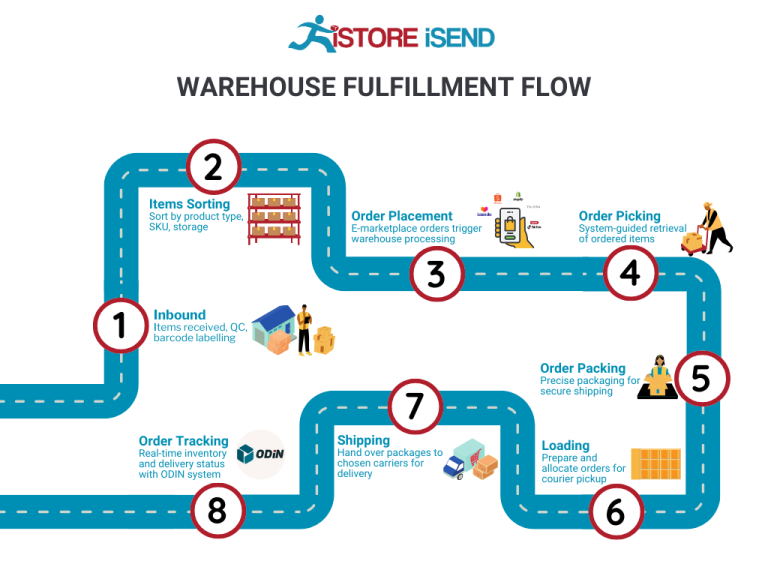
Key Term: ABC Analysis – This inventory categorization technique helps prioritize stock management efforts based on the value and turnover rate of the items, ensuring that high-demand products are easily accessible.
3. Order Picking
The third step is order picking, where warehouse staff retrieve items from storage to fulfill customer orders. This can be done using various methods, such as single order picking, batch picking, or wave picking, depending on the volume of orders and the structure of the warehouse.
Importance: Efficient order picking is crucial for customer satisfaction. The speed and accuracy of this process directly affect order fulfillment times and the likelihood of shipping errors, which can lead to returns and customer dissatisfaction.
Key Term: Pick List – A document or digital tool that outlines the items and quantities needed for each order, guiding pickers through the warehouse to gather the correct products.
4. Order Packing
After items have been picked, they move to the packing stage. Here, products are carefully packaged to ensure they arrive at the customer’s door in pristine condition. This involves selecting appropriate packaging materials and labeling shipments correctly.
Importance: Proper packing protects items during transit and enhances the unboxing experience for customers. Additionally, accurate labeling is essential for smooth processing in the shipping phase and for tracking shipments.
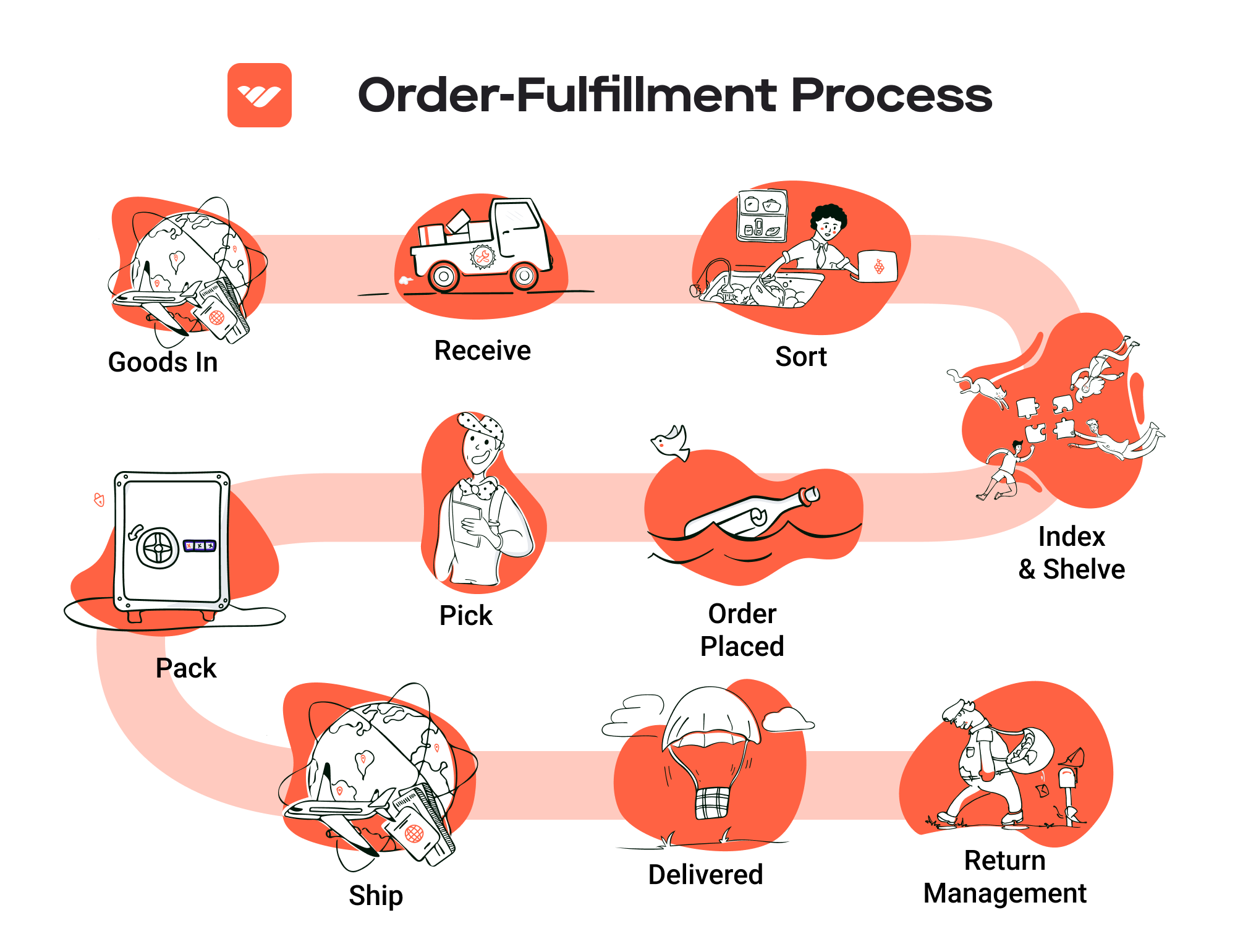
Key Term: Packing Slip – A document included in the package that lists the contents of the order, ensuring that customers receive what they ordered and providing a reference for returns if necessary.
5. Shipping & Delivery
The final step in the order fulfillment process is shipping and delivery. This involves coordinating with carriers to transport packages from the warehouse to the customer’s specified address. Businesses often have multiple shipping options available to meet customer preferences regarding speed and cost.
Importance: Timely shipping is a significant factor in customer satisfaction. Efficient delivery can enhance customer loyalty and encourage repeat business, while delays can lead to negative reviews and lost sales.
Key Term: Last Mile Delivery – Refers to the final step of the delivery process when the package is moved from a transportation hub to the final delivery destination, often the most complex and costly part of shipping.
By understanding and optimizing each of these steps in the order fulfillment process, e-commerce businesses can scale their operations effectively, ensuring that customers receive their orders promptly and in excellent condition. This not only fosters customer loyalty but also enhances the overall efficiency of the supply chain.
Comparing Fulfillment Models: In-House vs. 3PL vs. Dropshipping
Fulfillment Model Comparison
| Model | Who Handles Inventory | Best For (Business Stage) | Key Advantage | Key Disadvantage |
|---|---|---|---|---|
| In-House Fulfillment | Business owner/management team | Established businesses with sufficient capital | Greater control over inventory and customer experience | High overhead costs and resource allocation |
| Third-Party Logistics (3PL) | Third-party logistics provider | Growing businesses seeking scalability | Flexibility and reduced operational burden | Less control over inventory and potential service variability |
| Dropshipping | Supplier or manufacturer | Startups and small businesses | Low startup costs and minimal inventory risk | Lower profit margins and potential supply chain issues |
In-House Fulfillment
In-house fulfillment involves managing the entire logistics process within the business. This model is typically adopted by established e-commerce businesses that have the capital and resources to invest in warehousing, staffing, and fulfillment technology. The business retains full control over inventory, allowing for customized packaging, faster shipping times, and the ability to directly manage customer service. This model is particularly advantageous for companies looking to create a strong brand identity, as they can ensure that every aspect of the fulfillment process aligns with their brand values.
However, in-house fulfillment also comes with significant challenges. The overhead costs can be substantial, including expenses related to warehousing, labor, and technology. Additionally, as order volume increases, the business must continuously invest in scaling its operations, which can strain resources and divert focus from core business activities like marketing and product development. For companies that experience seasonal spikes in demand, the inability to quickly adapt to changing order volumes can lead to inefficiencies and missed opportunities.
Third-Party Logistics (3PL)
Third-party logistics (3PL) providers offer a middle ground between in-house fulfillment and dropshipping. In this model, a business outsources its logistics operations to a specialized provider that handles warehousing, order processing, and shipping. This is an ideal solution for growing e-commerce businesses that need to scale operations without the burden of managing logistics themselves. By leveraging a 3PL, businesses can benefit from the provider’s expertise, technology, and established shipping networks, resulting in improved operational efficiency and reduced shipping times.
One of the primary advantages of using a 3PL is the flexibility it offers. Businesses can easily adjust their logistics strategies based on market demands without the overhead costs associated with managing their own warehouses. However, there are notable downsides. The business relinquishes some control over inventory management and customer service, which can lead to variability in fulfillment quality. Additionally, relying on a third party can introduce complexities in communication and coordination, particularly if the 3PL provider does not align with the business’s operational standards or customer service philosophy.
Dropshipping
Dropshipping is a fulfillment model where the retailer does not keep products in stock but instead transfers customer orders directly to a supplier or manufacturer, who then ships the products directly to the customer. This model is particularly appealing to startups and small businesses, as it requires minimal upfront investment and eliminates the need to manage inventory or fulfillment logistics. With dropshipping, entrepreneurs can focus on marketing and sales while reducing financial risks associated with unsold inventory.
While dropshipping offers significant advantages, it also presents challenges. The most notable disadvantage is the lower profit margins, as the retailer often pays a premium for the convenience of not handling inventory. Additionally, reliance on suppliers for fulfillment can lead to issues such as stock shortages, shipping delays, and quality control problems. Since the retailer does not handle the product directly, they have limited control over the customer experience, which can impact brand reputation. Furthermore, competition in the dropshipping space can be intense, making it difficult for businesses to differentiate themselves and maintain profitability.
In summary, choosing the right fulfillment model depends on the specific needs, resources, and growth stage of the business. Each model has its unique advantages and disadvantages, and understanding these factors is crucial for e-commerce business owners looking to scale their operations effectively.
A Deep Dive into Amazon FBA: Pros, Cons, and Who It’s For
What is Fulfillment by Amazon (FBA)?
Fulfillment by Amazon (FBA) is a service offered by Amazon that allows sellers to store their products in Amazon’s fulfillment centers. Amazon then takes care of storage, packaging, and shipping of the products directly to the customers. This service is particularly beneficial for e-commerce businesses looking to scale quickly and efficiently without the burden of managing their own logistics.
When a customer places an order for a product that is fulfilled through FBA, Amazon handles the entire process: from picking the item from the warehouse, packing it securely, and shipping it to the customer. Additionally, Amazon handles customer service and returns for these orders, which can alleviate a significant workload for sellers.
How Does FBA Work?
- Sign Up: Sellers must create an Amazon seller account and enroll in FBA.
- Prepare Products: Sellers prepare their products according to Amazon’s guidelines, which include labeling and packaging requirements.
- Ship Inventory: Sellers ship their inventory to Amazon’s fulfillment centers.
- Storage: Amazon stores the products in their warehouses until sold.
- Order Fulfillment: When a customer orders a product, Amazon picks, packs, and ships the item.
- Customer Service: Amazon provides customer service for FBA orders, handling inquiries and returns.
- Payment: Sellers receive payments from Amazon after the orders are fulfilled, minus FBA fees.
Pros of Using FBA
-
Prime Eligibility: Products fulfilled by Amazon are eligible for Amazon Prime. This can significantly boost sales since Prime members often prefer to buy products that offer fast and free shipping.
-
Increased Customer Trust: Selling through FBA enhances credibility with customers, as they trust Amazon’s reliable shipping and customer service. This can lead to higher conversion rates.
-
Multi-Channel Fulfillment: FBA allows sellers to fulfill orders from other sales channels, such as their own websites or eBay, using Amazon’s logistics infrastructure. This streamlines operations and can reduce overhead costs.
-
Time Savings: By outsourcing fulfillment to Amazon, sellers can focus on other aspects of their business, such as product development and marketing, rather than logistics and shipping.
-
Scalability: FBA is designed to support growth. Sellers can scale their inventory and sales without worrying about managing warehousing or shipping logistics.
-
Inventory Management Tools: Amazon provides sellers with tools and reports to track inventory levels and performance, helping them manage their stock effectively.
Cons of Using FBA
-
High Fees: FBA comes with various fees, including storage fees for inventory and fulfillment fees based on the size and weight of the products. These fees can add up, impacting profit margins.
-
Strict Inventory Rules: Amazon has strict inventory management guidelines. Sellers must ensure their products are compliant with these rules to avoid penalties or account suspension.
-
Commingling Risks: FBA uses a commingled inventory model, meaning that sellers’ products may be mixed with those of other sellers. This can lead to issues if a customer receives a defective product or if there’s a discrepancy in inventory.
-
Loss of Control: When using FBA, sellers relinquish some control over the fulfillment process. Issues such as shipping delays or lost packages are handled by Amazon, which can be frustrating for sellers.
-
Complex Returns Process: Although Amazon handles returns, the process may not always align with the seller’s preferences or business model. This can create challenges in managing customer satisfaction and inventory levels.
-
Potential for Over-Reliance: Relying heavily on FBA may limit a seller’s ability to diversify their fulfillment strategies, making them vulnerable to changes in Amazon’s policies or fee structures.
Who is FBA Best For?
FBA is particularly well-suited for:
- Small to Medium-Sized Businesses: Companies looking to scale quickly without investing heavily in logistics infrastructure can benefit from FBA’s efficient fulfillment process.
- E-commerce Entrepreneurs: New sellers entering the e-commerce space can leverage FBA to gain visibility and credibility without the need for upfront investment in warehousing and shipping.
- Sellers with High Sales Volume: Businesses with a high volume of sales can maximize the advantages of FBA, such as Prime eligibility and multi-channel fulfillment.
- Brands Seeking Growth: Established brands looking to expand their reach and improve customer experience may find FBA an effective solution to enhance their logistics capabilities.
In conclusion, while FBA offers numerous advantages that can help sellers scale their businesses efficiently, it is essential to weigh these benefits against the potential downsides. Understanding how FBA aligns with your business model and growth objectives is crucial for making an informed decision.
Core Services Offered by Fulfillment Centers
Inventory Management & Warehousing
Effective inventory management and warehousing are foundational services provided by fulfillment centers, which directly impact an e-commerce business’s efficiency and customer satisfaction. Fulfillment centers utilize sophisticated inventory management systems that track stock levels in real-time, ensuring that businesses have the right amount of product on hand.
Benefits:
1. Optimized Stock Levels: By maintaining accurate inventory counts, businesses can reduce the risk of overstocking or stockouts, which can lead to lost sales and increased holding costs.
2. Improved Forecasting: Advanced analytics and reporting tools allow e-commerce companies to forecast demand based on historical data, seasonal trends, and market conditions, facilitating smarter purchasing decisions.
3. Space Efficiency: Fulfillment centers often offer scalable warehousing solutions, allowing businesses to adjust their storage needs based on growth without the overhead of maintaining their own facilities. This flexibility can be crucial for seasonal spikes in demand.
4. Accessibility: Centralized warehousing locations can reduce shipping times and costs, improving the overall customer experience by enabling faster delivery.
Pick and Pack Services
Pick and pack services refer to the process of selecting items from inventory and packing them for shipment. This service is crucial for e-commerce businesses that require accuracy and efficiency in order fulfillment.
Benefits:
1. Accuracy in Order Fulfillment: Fulfillment centers employ barcoding and scanning technology to ensure that the correct items are picked for each order, reducing the likelihood of errors that can lead to customer dissatisfaction.
2. Speed: With trained staff and optimized workflows, fulfillment centers can significantly speed up the order processing time. This can be particularly advantageous during peak shopping seasons or promotional events.
3. Custom Packaging Options: Many fulfillment centers offer customizable packaging solutions, allowing businesses to enhance their brand visibility and customer experience. This can include branded boxes, tissue paper, and personalized notes.
4. Scalability: As e-commerce businesses grow, fulfillment centers can easily scale their pick and pack operations to meet increased order volumes without the need for additional investment in labor or equipment.
Kitting and Assembly
Kitting and assembly services involve grouping individual items into a single package or preparing products for sale, which can include assembly of components into a finished product. This service is particularly beneficial for businesses that sell complex items or gift sets.
Benefits:
1. Enhanced Product Offering: By bundling products together, businesses can create unique offerings that attract customers and increase average order value. For instance, a skincare brand could offer a kit that includes multiple related products at a discounted price.
2. Streamlined Operations: By outsourcing kitting and assembly, businesses can focus on their core competencies while leaving the labor-intensive tasks to fulfillment experts who specialize in these processes.
3. Improved Inventory Management: Kitting allows for better inventory control by reducing the number of individual SKUs that need to be tracked. This can simplify inventory management and reduce the complexity of order fulfillment.
4. Customization Options: Many fulfillment centers provide the ability to customize kits based on customer preferences or seasonal promotions, allowing businesses to respond quickly to market demands.
Returns Management (Reverse Logistics)
Returns management, or reverse logistics, is the process of handling returned merchandise efficiently and effectively. In the world of e-commerce, where return rates can be high, having a robust returns management system is essential for maintaining customer satisfaction and loyalty.
Benefits:
1. Streamlined Returns Process: Fulfillment centers can simplify the returns process for customers by providing pre-paid return labels, easy-to-follow instructions, and efficient processing of returns, thereby enhancing the overall customer experience.
2. Inventory Recovery: Effective returns management allows businesses to quickly assess returned items, determine if they can be restocked or need to be refurbished, and minimize losses associated with returned goods.
3. Data Insights: By analyzing return data, businesses can identify patterns and underlying issues, such as product quality or sizing discrepancies, enabling them to make informed decisions to reduce future returns.
4. Cost Savings: Efficient returns processing can lead to reduced handling costs and improved cash flow, as businesses can quickly reintegrate returned items into inventory or resolve issues without extensive delays.
In conclusion, partnering with a capable fulfillment center offers e-commerce businesses a wide range of services that can streamline operations, reduce costs, and improve customer satisfaction. By leveraging these core services, businesses can focus on growth and scaling their operations effectively in a competitive market.
How to Choose a Fulfillment Partner: A 6-Point Checklist
Location & Warehouse Network
Importance: The geographical location of your fulfillment partner’s warehouses can significantly impact shipping times and costs. Proximity to your customer base allows for faster deliveries and reduced shipping fees, which can enhance customer satisfaction and improve your competitive edge.
Questions to Ask:
– Where are your warehouses located, and how many do you operate?
– Can you provide coverage maps showing your delivery reach?
– What is your average shipping time to key markets?
– Do you have plans to expand your warehouse network?
Technology & Integrations
Importance: Efficient fulfillment relies heavily on technology. A partner’s ability to integrate with your existing e-commerce platforms (like Shopify, WooCommerce, or Amazon) and their inventory management systems can streamline operations, reduce errors, and improve visibility throughout the supply chain.
Questions to Ask:
– What technology do you use for inventory management and order processing?
– Can your system integrate with our e-commerce platform?
– Do you offer real-time tracking for orders?
– How do you handle system updates and maintenance?
Specializations (e.g., Cold Storage, Oversized Items)
Importance: Depending on your product line, you may require specialized storage solutions. If you sell perishables, fragile items, or oversized goods, it’s crucial to partner with a fulfillment provider that has the necessary capabilities to handle these products safely and efficiently.
Questions to Ask:
– What types of products do you specialize in fulfilling?
– Do you have facilities for temperature-sensitive items?
– How do you manage the storage and handling of oversized or heavy products?
– What measures do you take to ensure product integrity during storage and shipping?
Scalability & Capacity
Importance: As your business grows, so will your fulfillment needs. A capable partner should have the infrastructure and flexibility to scale operations seamlessly, accommodating seasonal spikes in demand or long-term growth without compromising service quality.
Questions to Ask:
– What is your current capacity for order fulfillment?
– How quickly can you scale operations if our order volume increases?
– Can you handle fluctuations in demand, such as peak seasons or promotional events?
– What strategies do you have in place to manage capacity constraints?
Pricing and Contracts
Importance: Understanding the pricing structure and contract terms is essential for budgeting and ensuring profitability. Transparent pricing helps you avoid hidden fees and allows you to make informed decisions about your fulfillment costs.
Questions to Ask:
– What is your pricing model (e.g., per order, per item, monthly fees)?
– Are there any additional fees we should be aware of (e.g., storage, handling, returns)?
– What are the terms of your contracts, and is there flexibility for renegotiation?
– How do you handle price adjustments over time?
Customer Support & Reviews
Importance: Exceptional customer support can make a significant difference in resolving issues quickly and maintaining a positive relationship. Checking reviews and testimonials can provide insights into the partner’s reliability and the quality of their service.
Questions to Ask:
– What support channels do you offer (e.g., phone, email, chat)?
– What are your average response times for customer inquiries?
– Can you provide references or case studies from similar businesses?
– How do you handle issues related to order errors, shipping delays, or damaged products?
Conclusion
Choosing the right fulfillment partner is a critical step in scaling your e-commerce business. By systematically evaluating potential partners based on the criteria outlined in this checklist, you can make an informed decision that aligns with your operational needs and growth goals. Prioritizing these aspects will not only enhance your logistics performance but also improve customer satisfaction and drive business success.
Understanding Fulfillment Pricing: A Breakdown of Common Fees
Initial Setup Fees
Initial setup fees are one-time charges incurred when you first begin working with a fulfillment center. These fees cover the costs associated with onboarding your business, which may include account setup, integration with your e-commerce platform, and any necessary customization of services to fit your specific needs.
The calculation of initial setup fees can vary significantly among providers. Generally, you can expect to pay anywhere from $50 to $500 depending on the complexity of your operations and the level of service required. Some fulfillment centers may waive this fee if you commit to a longer-term contract or meet a minimum order volume.
Receiving Fees
Receiving fees are charged for the process of accepting and processing your inventory once it arrives at the fulfillment center. This includes unloading the shipment, checking the goods against the shipping manifest, and storing the items in the warehouse.
Receiving fees are typically calculated per pallet or per box. For example, a fulfillment center might charge $10 to $25 per pallet and $1 to $5 per box, depending on the size and weight of the items being received. It’s important to factor in these costs, especially if you plan to send frequent shipments to the warehouse.
Storage Fees (per pallet/bin)
Storage fees apply to the inventory that remains in the fulfillment center. These fees are charged on a monthly basis and can vary based on the space your products occupy. Storage fees can be calculated per pallet, per cubic foot, or per bin, depending on the fulfillment provider’s pricing model.
Typical rates can range from $10 to $40 per pallet per month. If your products are smaller or fit into bins, you might encounter fees calculated on a per-bin basis, which could be anywhere from $1 to $5 monthly per bin. Understanding your inventory turnover rate will help you estimate storage costs more accurately.
Pick & Pack Fees (per item/order)
Pick and pack fees are charged for the labor involved in selecting items from inventory and packing them for shipment. This fee is essential for e-commerce businesses, as it directly impacts your order fulfillment process.
These fees are generally calculated per item or per order. For instance, fulfillment centers may charge $1 to $3 per item picked and packed, or a flat fee of $3 to $5 per order, regardless of the number of items. When evaluating pick and pack fees, consider the average number of items in your orders and how that may affect your overall fulfillment costs.
Shipping Fees
Shipping fees cover the costs associated with delivering your products to customers. These fees can vary widely based on several factors, including the shipping carrier, delivery speed, package weight, and destination.
Shipping fees are often calculated based on real-time rates provided by carriers like USPS, UPS, or FedEx. Many fulfillment centers will pass these rates directly to you, while some may include a handling fee on top of the carrier’s charges. It’s crucial to understand your shipping strategy, as options like flat-rate shipping or free shipping thresholds can significantly affect your overall expenses.
Tips for Getting an Accurate Quote
-
Provide Detailed Information: When seeking quotes from fulfillment centers, be as specific as possible about your product types, average order sizes, and shipping destinations. This detail will help providers give you a more accurate estimate.
-
Ask About Hidden Fees: Inquire about any additional fees that may not be immediately apparent, such as returns processing, inventory management, or seasonal surcharges.
-
Compare Multiple Providers: Don’t settle for the first quote you receive. Comparing multiple fulfillment centers can help you identify the best fit for your business needs and budget.
-
Consider Long-Term Contracts: Some fulfillment centers offer discounts for long-term commitments or higher volume guarantees. If you anticipate growth, discuss potential pricing structures that could benefit your business.
-
Evaluate Service Levels: Different fulfillment centers may offer varying levels of service. Ensure that the costs reflect the quality and efficiency of the service you require.
By understanding these common fulfillment pricing models and following these tips, you can make informed decisions that will help scale your e-commerce operations effectively while managing costs.
Frequently Asked Questions (FAQs) about Fulfillment
1. What does it mean that Jesus is the fulfillment of the Law and the Prophets?
Jesus’ fulfillment of the Law and the Prophets signifies that he completes the divine narrative laid out in the Hebrew Scriptures. This means he embodies the moral and ethical teachings of the Law, while also bringing to fruition the prophetic promises of redemption and restoration, ultimately demonstrating God’s love and intention for humanity.
2. How does Jesus fulfill the Law?
Jesus fulfills the Law by perfectly embodying its moral requirements and teaching its deeper meanings. Rather than abolishing the Law, he expands its purpose to include love and relational integrity, as seen in the Sermon on the Mount (Matthew 5-7). His life and teachings reveal the ultimate intent of the Law, which is to guide humanity towards love for God and neighbor.
3. What are the implications of Jesus fulfilling the Law for modern believers?
For modern believers, Jesus’ fulfillment of the Law invites them to engage in a transformative relationship with God. It emphasizes the importance of internalizing the Law’s principles rather than merely adhering to its rules. This means cultivating a heart of love and service toward others, aligning with the core teachings of Jesus.
4. How does the concept of fulfillment differ from mere obedience?
Fulfillment goes beyond simple obedience to the rules; it involves understanding and living out the underlying principles of love and justice that the Law represents. While obedience can be a checklist of actions, fulfillment requires a heart transformation that seeks to embody the spirit of the Law in daily life.
5. What role do the Prophets play in understanding Jesus’ fulfillment?
The Prophets foretold the coming of a Messiah who would bring healing and restoration. Jesus’ life and mission align with these prophetic messages, revealing him as the key figure who brings God’s promises to fruition. Understanding the prophetic context enriches the understanding of Jesus’ role in salvation history.
6. How can businesses apply the principles of fulfillment in their operations?
Businesses can apply the principles of fulfillment by focusing on customer relationships and satisfaction rather than just transactional interactions. This includes creating value through excellent service, ethical practices, and a commitment to meeting customer needs, much like how Jesus fulfilled the deeper needs of humanity through love and compassion.
7. What is the significance of the Sermon on the Mount in relation to fulfillment?
The Sermon on the Mount is significant because it outlines the ethical framework of Jesus’ teachings, emphasizing love, humility, and mercy. It serves as a guide for believers to live out the principles of the Law in a way that reflects the character of God, effectively showing how to fulfill the Law through love and righteous living.
8. What is the difference between a warehouse and a fulfillment center?
A warehouse is primarily a storage facility for goods, while a fulfillment center is designed for order processing, packing, and shipping to customers. Fulfillment centers often include additional services such as inventory management and customer service, which are crucial for e-commerce businesses aiming to scale efficiently.
9. What is a 3PL (Third-Party Logistics), and how does it relate to fulfillment?
A 3PL is a service provider that manages logistics and supply chain operations on behalf of another company. This can include warehousing, fulfillment, and shipping. Utilizing a 3PL can help businesses scale their operations by outsourcing logistical tasks, allowing them to focus on core activities such as product development and marketing.
10. How much do fulfillment services cost?
The cost of fulfillment services varies based on factors like order volume, storage needs, and additional services required (like packaging and shipping). Typically, fulfillment centers charge fees per order, storage fees based on the space used, and possibly additional costs for special handling. It’s essential for businesses to analyze their specific needs and compare providers to find the best fit for their budget and operational goals.
Conclusion: Is Outsourcing Fulfillment the Right Move for Your Business?
Evaluating the Benefits of Outsourcing Fulfillment
Outsourcing fulfillment can significantly enhance your e-commerce operations, enabling you to focus on core business activities while leveraging the expertise of specialized partners. One of the most compelling advantages is time savings. By handing over inventory management, order processing, and shipping logistics to a fulfillment service, you free up valuable time that can be redirected toward strategic growth initiatives, marketing, and customer engagement.
Scalability is another critical benefit. As your business grows, so do the complexities of managing inventory and logistics. A reliable fulfillment partner can easily scale operations to accommodate increased order volumes, seasonal fluctuations, or new product launches without the need for substantial investment in infrastructure or staffing. This agility allows you to respond quickly to market demands, ensuring you stay competitive.
Moreover, fulfillment services bring in-depth expertise and technology that may be challenging to develop in-house. These providers often utilize advanced systems for inventory tracking, order management, and shipping optimization, which can lead to improved accuracy, reduced costs, and enhanced customer satisfaction.
Choosing the Right Fulfillment Partner
However, the success of outsourcing fulfillment hinges on selecting the right partner. It’s essential to evaluate potential providers based on their track record, technology capabilities, and alignment with your business goals. A misaligned partnership can lead to inefficiencies and dissatisfaction, undermining the benefits you seek.
Take Action
To determine if outsourcing fulfillment is the right move for your business, conduct a thorough audit of your current shipping process. Assess areas where time, resources, or costs can be optimized. By evaluating your operational needs against the offerings of potential fulfillment partners, you can make an informed decision that positions your business for sustainable growth. Remember, the right partner can be a game-changer in your journey toward scaling your e-commerce success.
Important Disclaimer
⚠️ Important Disclaimer
The information in this guide is for educational purposes. Fulfillment services, pricing, and platform features change frequently. Always conduct your own due diligence and consult with providers directly before making business decisions.
